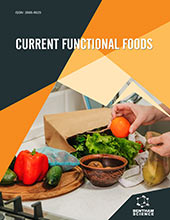
Full text loading...
Bread is consumed by almost every household worldwide as a dietary staple. Most commercial bread products are made with refined wheat flour and have an incomplete nutritional profile. Refined wheat bread is comparatively lower in protein with an unbalanced amino acid profile and is low in fibre, vitamins, minerals, and phytochemicals. The enrichment of bread to increase nutritional quality and functionality while preserving sensory properties has been a point of interest for decades. Legumes and pulses are nutrient-dense plant ingredients capable of increasing and balancing the nutritional value of bread, especially the protein quality. The review aims to explore possible legumes and pulses for bread enrichment and recent developments in the study area, balancing the amino acid profile of bread, the behaviour of legume anti-nutritional factors in bread making, enhancing protein metabolism, associated challenges, and future directions. The Enrichment of bread with legumes and pulses will ensure a high protein intake, a balanced amino acid profile, and additional vitamin, mineral, and phytochemical content compared to refined wheat bread. The development and commercialization of enriched functional bread products will benefit a vast population, especially in developing countries.

Article metrics loading...

Full text loading...
References


Data & Media loading...

